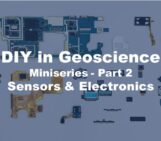
Soil and water resources that are essential to human and aquatic life are increasingly threatened by human activities and the impacts of land use and climate change. Sediments play hereby a key role, particularly fine sediments with sediment-associated pollutants, which can lead to a substantial degradation of water body quality, such as in rivers and reservoirs.
Sediment tracing as a first step to sediment management
To improve our understanding of erosion processes that deliver sediments to water bodies, and to help design effective control measures, techniques of sediment tracing or fingerprinting are increasingly being used by the international scientific community. These techniques rely on the analysis of conservative bio-physico-chemical properties in potential sources and in target sediment, such as geochemical, colour, radionuclide or organic matter properties. If sufficiently discriminant characteristics can be identified in the sources and the targets, un-mixing models can reconstruct sediment source contributions.

Sediment sampling in a river draining Fukushima radioactive pollution plume
However, the implementation of these techniques remains challenging, since sediment transfer across landscapes may alter tracer properties or filter certain grain sizes.
Joining forces : a call for action
In this context, we organised a Tracing Thematic School during four days in France nearby Paris in October 2021 to train the community and propose guidelines to improve future implementations of the technique. The outputs of the discussions held at the School were synthesized and published to be available to the entire scientific community.
Then, in 2022 and 2023, an International Tracing Day was organised at the University of Vienna on Sunday before the EGU General Assembly to continue discussing these challenges, to facilitate the participation of European and non-European colleagues and to minimize the environmental impact of the meeting.

The group of participants who attended the Tracing School in 2021
A major outcome of these discussions was the need for harmonizing and sharing the sediment tracing datasets generated by the international community. We therefore published a first dataset in open access in order to provide an example to be followed by other research groups. We hope that this model dataset will be useful and will encourage other groups to follow the same pathway towards open research. The next steps include other research groups to publish their own datasets following this format, before initiating an international exercise to test research hypotheses and compare the outputs of different models.
These Thematic Days were organised in parallel to a scientific session dedicated to these techniques held for the last several years at the EGU General Assembly. If you would like to participate to these exciting International Study Days or to share your own dataset, feel free to contact the authors of this post!
Post edited by B. Schaefli. O. Evrard is currently the chair of the Hydrology Subdivision on Erosion, Sedimentation and river processes



